【AD】What is Saiku and the Saio? Introducing a tour of museums, hands-on facilities, and historic sites!
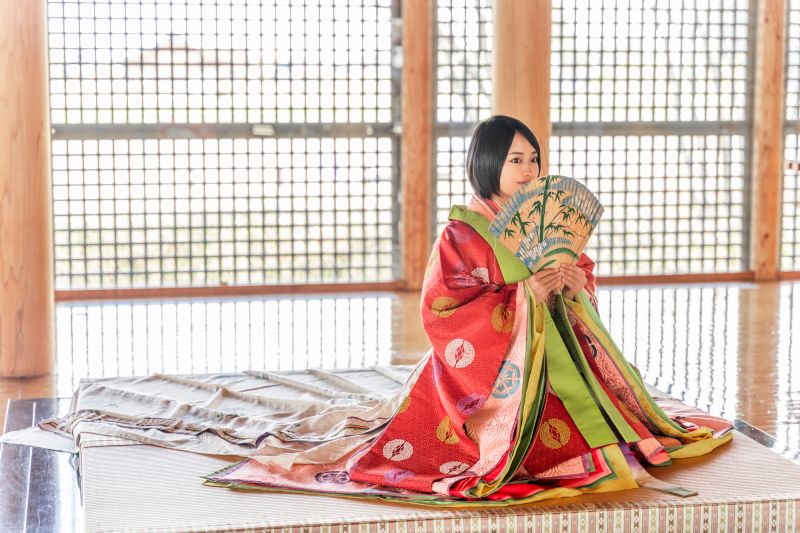
Have you ever heard about the Saio who served the Ise Jingu for generations in place of the Emperor? Enjoy learning about the history and culture of the Saio period through a visit to historical sites, museums, and hands-on facilities in Meiwa, where the Saio's palace, Saiku, was located.
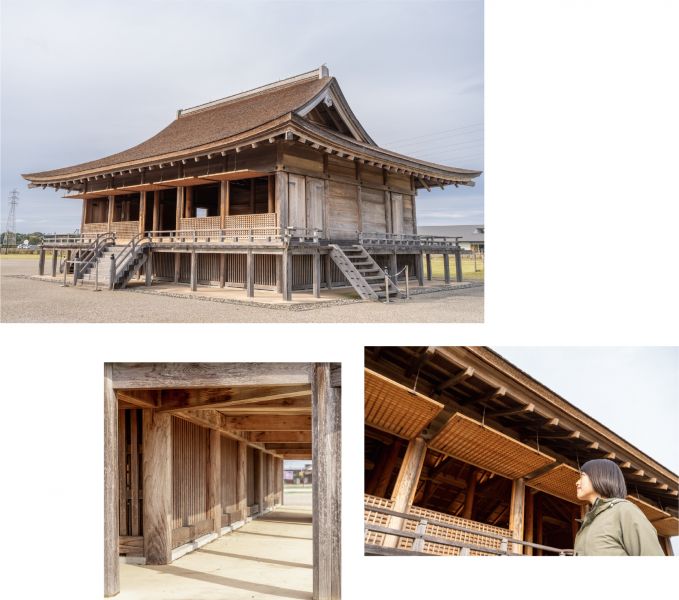
<Seiden (Main Hall)>
The Seiden is thought to have been the building used by the leader of the Saiku for performing ceremonies and welcoming envoys from the capital and Ise Jingu.
Excavations have revealed that the Seiden was the most prestigious building in the Saiku Office.
The Seiden of Saiku Heian-no-Mori has been academically verified and reproduced with a hip-and-gable roof and raised floor.
The detailed workmanship makes it a sight to behold!
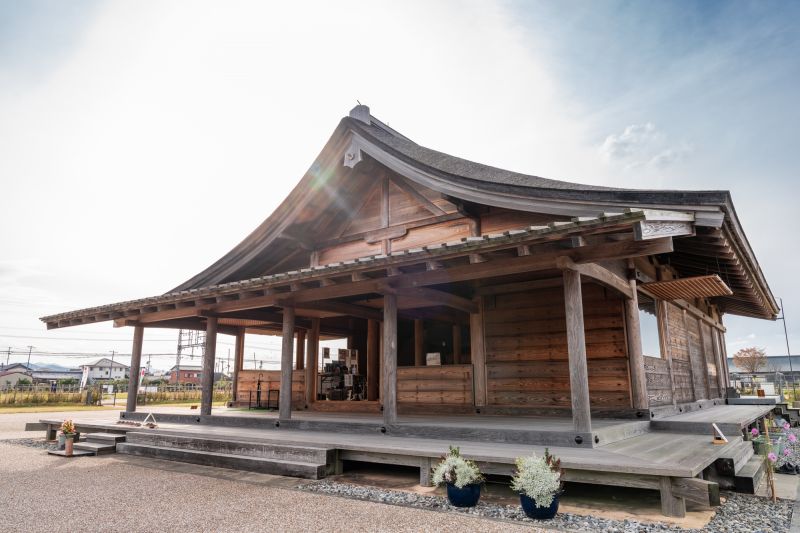
<West Wakiden (Side Hall)>
The West Wakiden is the largest of the three buildings.
Because of its size, it is thought to have been used for indoor ceremonies and ceremonial banquets to entertain guests from the capital and Ise Jingu.
It features large eaves and a gabled roof.
It’s fun to compare the three buildings, including the East Wakiden(Side Hall), and enjoy the differences in structure♪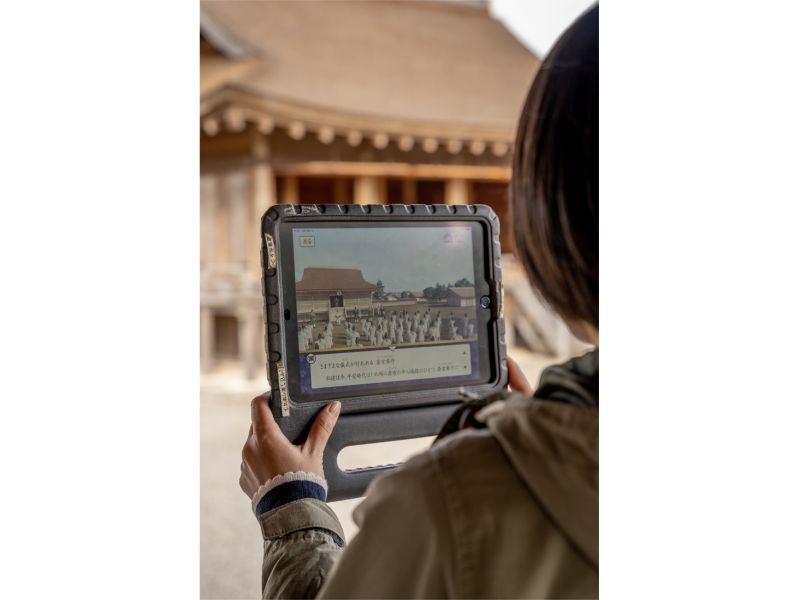
<Learning about Saiku with VR!>
When visiting the Saiku Heian-no-Mori, make sure to try out the Saiku VR as well♪
Hold up a dedicated tablet to project scenes from the ancient Saiku rituals onto the actual scenery.
Saiku VR can be experienced for free!
******************************************************************************************
<Sightseeing information>
【Hours】March – October: 9:30 - 17:00 (admission until 16:30), November - February: 9:30 - 16:00 (admission until 15:30)
【Closed】 Mondays (or the following day if Monday is a national holiday) and the New Year holiday【Admission fee】 Free to visit
【Location】 Saiku Yanagihara, Meiwa-cho, Taki-gun, Mie Prefecture
******************************************************************************************
6. Visiting nearby places of interest!
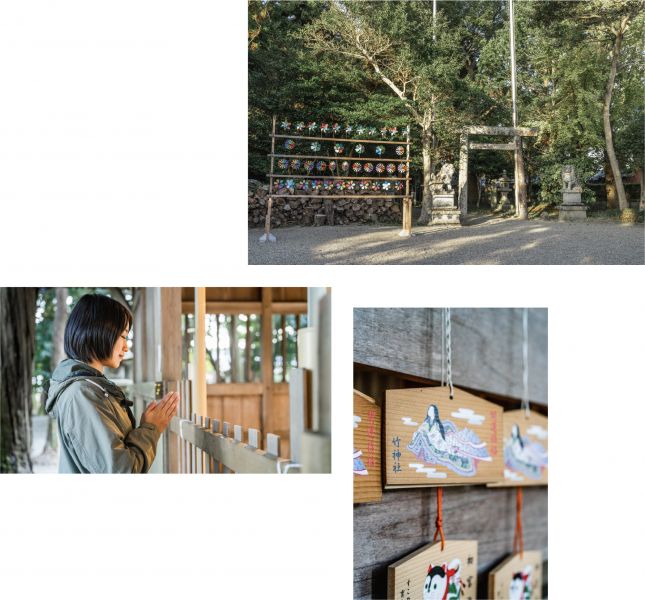
<Take Shrine, where the Saios’ palace was located>
Take Shrine is found on the site where the palace of the Saio, called the Naiin (inner sanctuary), is said to have been located since the Heian period.
It is believed that even after the Saiku system was abolished, the importance of the site remained as a memory among the local people, which led to the site being considered the shrine that it is today.
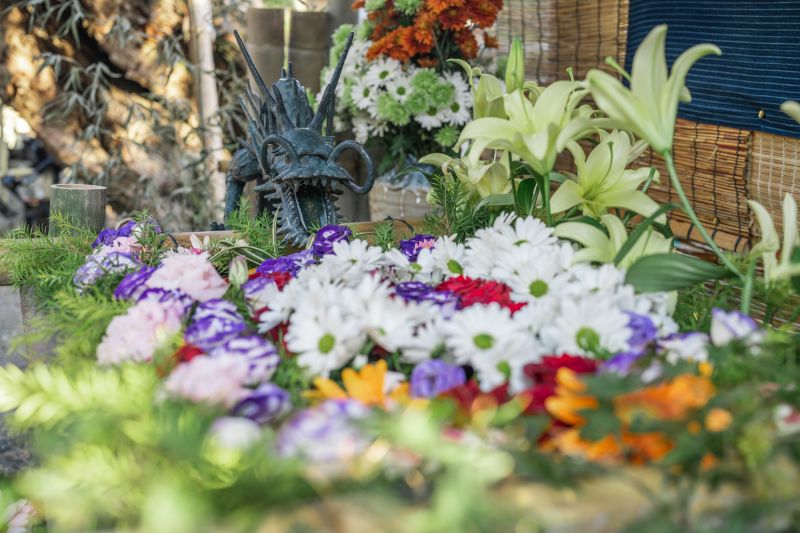
Take Shrine is also a popular spot for its beautifully decorated Hanachozu, or flower water for bathing one’s hands. (*Decorations vary by season.)
Hanachozu:
A water bowl used at shrines and temples to purify the body and soul, containing flowers.
The Hanachozu filled with colorful flowers is soothing to simply look at.
******************************************************************************************
<Sightseeing information>
【Office hours】 Saturday and Sunday 10:00 - 15:00
【Location】 2757-2, Saiku, Meiwa-cho, Taki-gun, Mie Prefecture
******************************************************************************************
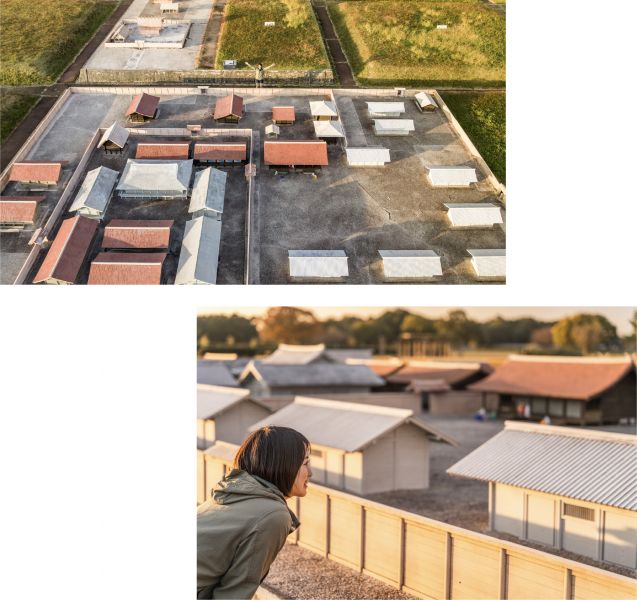
<A great way to comprehend the scale of Saiku! 1/10 scale model of the entire historic site>
The 1/10 scale model presents Saiku in its entirety, including the buildings of the time.
You can see the whole area at once and get a good sense of the scale of Saiku!
Enjoy walking between the grid-like sections of the street and peering into the rows of buildings as you take a stroll♪
******************************************************************************************
<Sightseeing information>
【Location】 Saiku, Meiwa-cho Taki-gun, Mie Prefecture
*In the Saiku Historical Square
******************************************************************************************
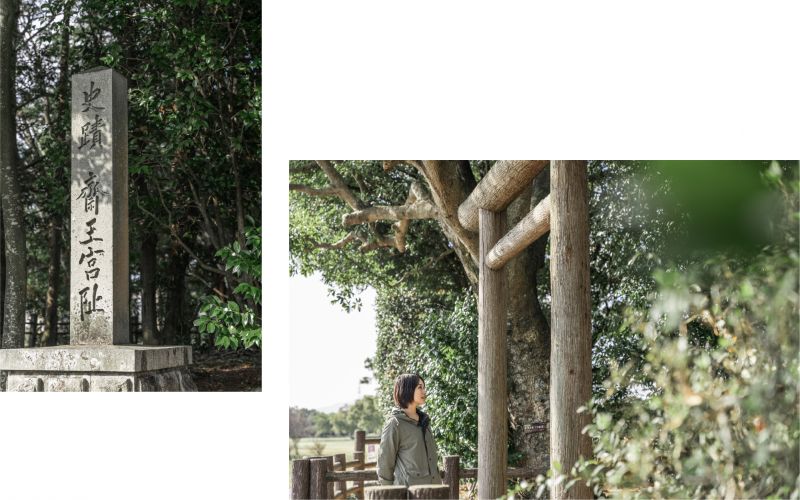
<Saio-no-Mori (Saio Woods), a place of Saio History Tradition>
Saio-no-mori is where the local people have believed that the palace of the Saio was located even before the excavation of the Saiku ruins began.
As excavation of the Saiku ruins progressed, it became known that the Saio-no-Mori was adjacent to the northern edge of the grid-shaped area.
At the entrance to the Saio-no-Mori stands a torii gate made of unpeeled cedar wood, as is.
This is the oldest type of torii in Japan, called "Kuroki no torii" (black wood torii).The Kuroki no torii, illuminated by sunlight shining through the trees, is full of atmosphere! It is well worth seeing.
******************************************************************************************
<Sightseeing information>
【Location】 Saiku, Meiwa-cho, Taki-gun, Mie Prefecture
******************************************************************************************
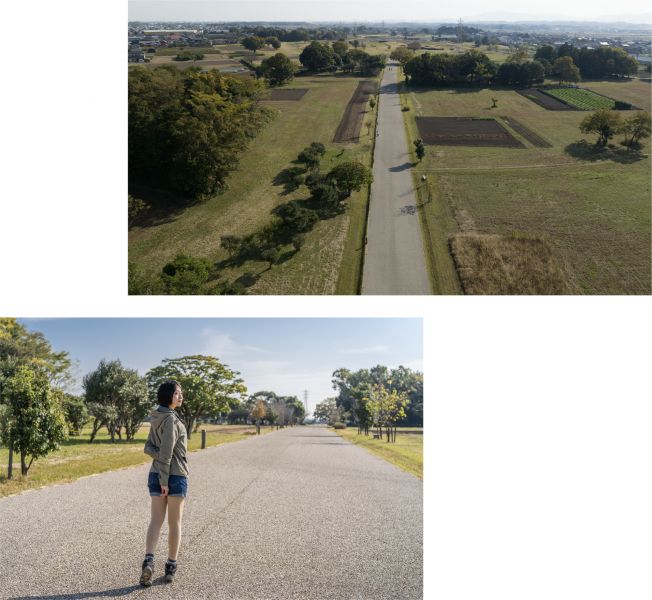
<The Ancient Ise Road that was used by the Saio and other envoys of the emperor>
The excavated Ancient Ise Road has been maintained and made usable.
About 9 meters wide, it is a straight road with ditches on both sides.
When you actually walk on the road, you can clearly tell that it was built with a fairly wide width.
According to archives, this road was built between the Asuka and Nara periods(Late 7th century - 8th century), and was the main route connecting the capital, Ise Jingu , and Shima Province.
It is believed to have been used by the Saio and the imperial envoys of the emperor who came from the capital.
It’s quite exciting to be able to actually walk along the path that historical figures took.
******************************************************************************************
<Sightseeing information>
【Location】Takegawa, Meiwa-cho, Taki-gun, Mie Prefecture
******************************************************************************************
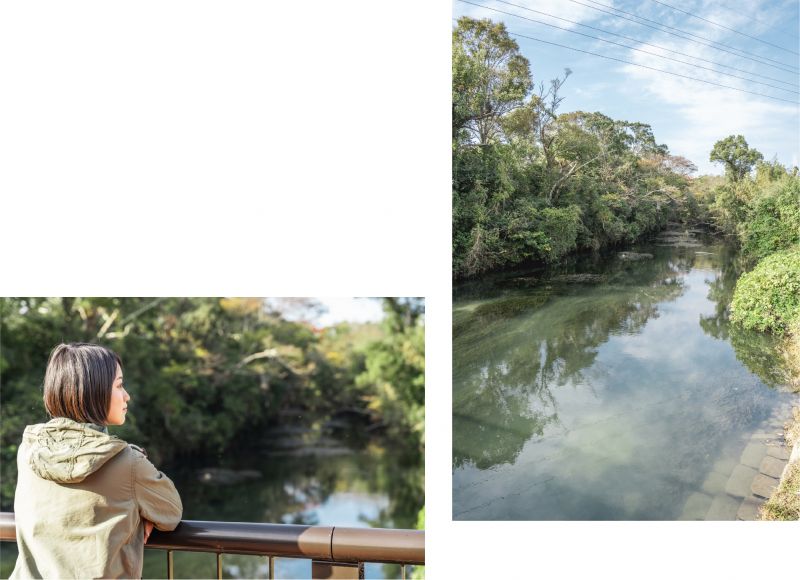
<The Harai river where the Saio performed misogi (purification ceremonies)>
The Harai River is a tributary of the Kushida River and runs along the west side of the Saiku Shrine.
It is said that the Saio performed purification ceremonies in accordance with various events in this river.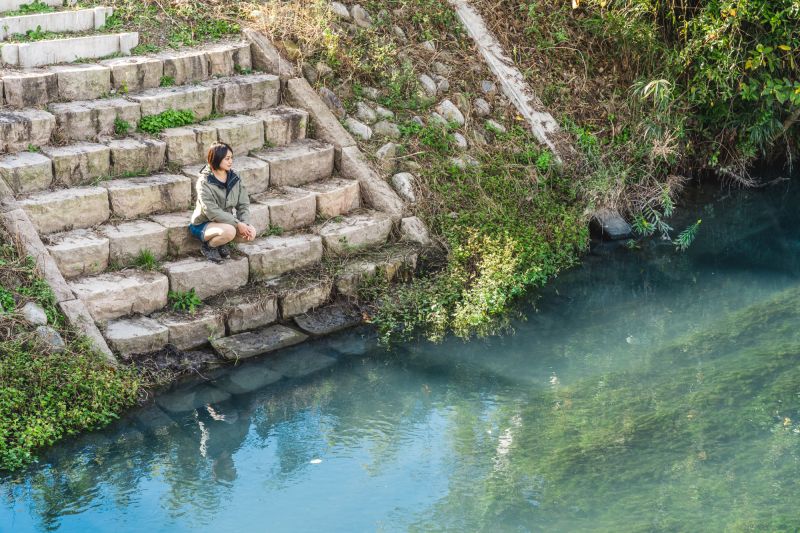
The Harai River was and still is a beautiful river and has been selected as one of the 500 most important wetlands in Japan.
It is also said that the river has hardly undergone revetment and still retains the nature of the 1950s.
It feels refreshing to descend to the shore and observe the beautiful flow of the river.
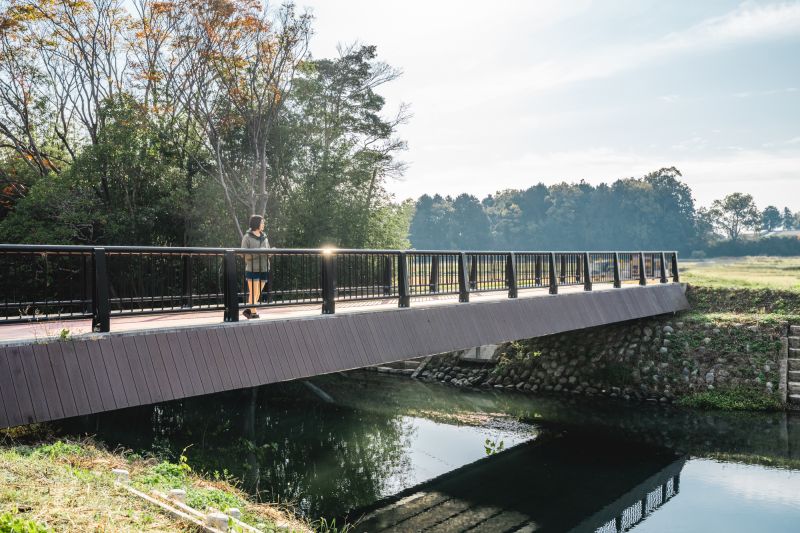
<Reproduction of the Jigu Bridge over the Harai River>
In the Edo period , there used to be a bridge called Jigu Bridge extending over the Harai River.
Locals called it “Jigubashi”, and in the Showa period, it was used for transportation to and from Matsusaka City and for agricultural work.
The bridge was in use until the 1950s and then disappeared, but in 2021, a new JinguJigu Bridge was constructed, allowing people to cross it again.
The bridge provides convenient access from Kintetsu Koishiro Station to the Saiku ruins, so make sure to take advantage of it.
******************************************************************************************
<Sightseeing information>
【Location】 Takegawa, Meiwa-cho, Taki-gun, Mie Prefecture
******************************************************************************************
7. Renting a bicycle to tour around the Saiku area!
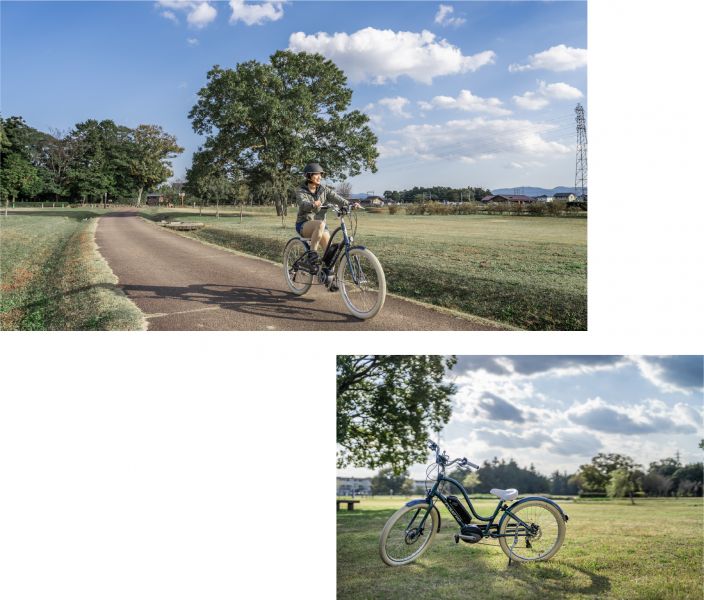
You can rent a bicycle for up to 6 hours a day!
Electric-powered bicycles (e-bikes) make it easy to pedal without effort.
******************************************************************************************
<Rental location>
Monday - Friday: Meiwa Kanko Shosha (just outside the south exit of Kintetsu Saiku Station)
Saturday and Sunday: Coffee shop Minoriya (in front of Take-jinja Shrine)
******************************************************************************************
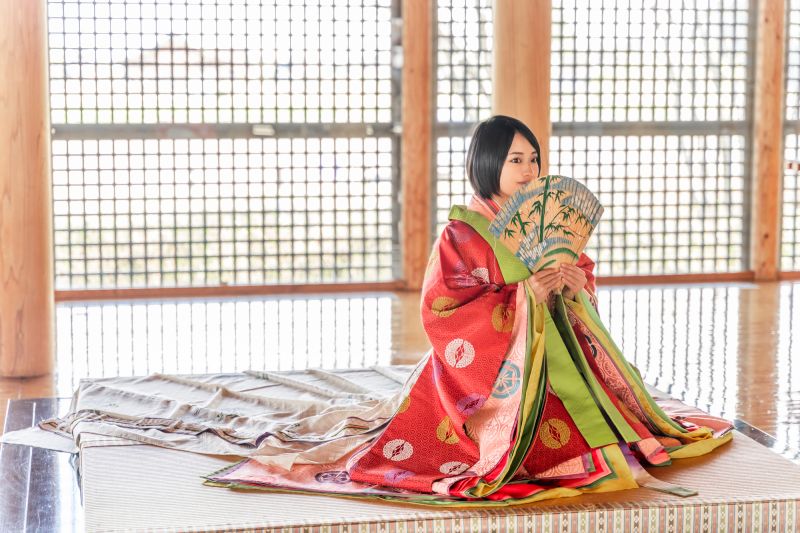
<YouTube Channel Kazari Project>
This kimono is how heavy?! Juni-hitoe!
Now published♪
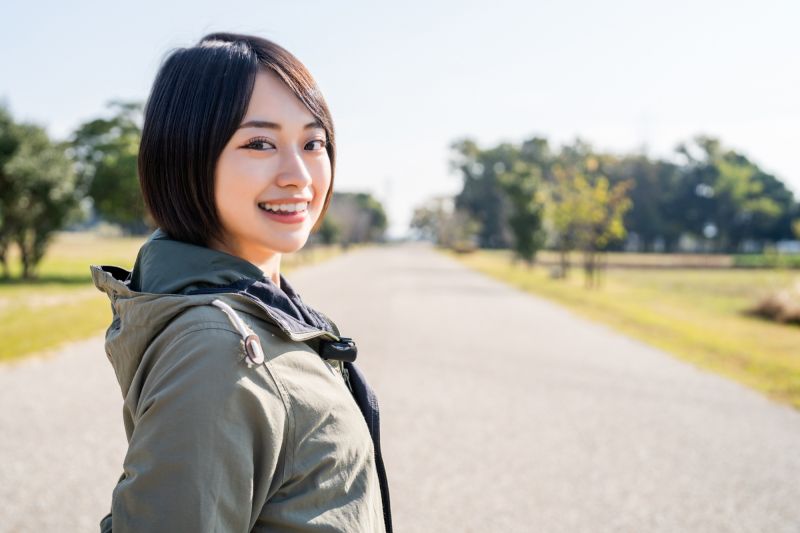
<Photo model: Kazari - Profile>
Born on February 25. From Mie Prefecture. After graduating from Nihon University College of Art, served in the Japan Ground Self-Defense Force.
Upon completion of her term of service, currently works as a model and actress.
She is an opinion leader of the Ground Self-Defense Force Eastern Area Unit. In addition to official public relations activities for the Self-Defense Forces, engages in activities both in Japan and abroad, starring in movies and commercials, and working as a model and YouTuber.
Hobbies include drawing, cosplay, and camping.
Specialties are design, soft tennis, and Morse code.Has about 400,000 total followers on social media.
Article produced by: MSLP